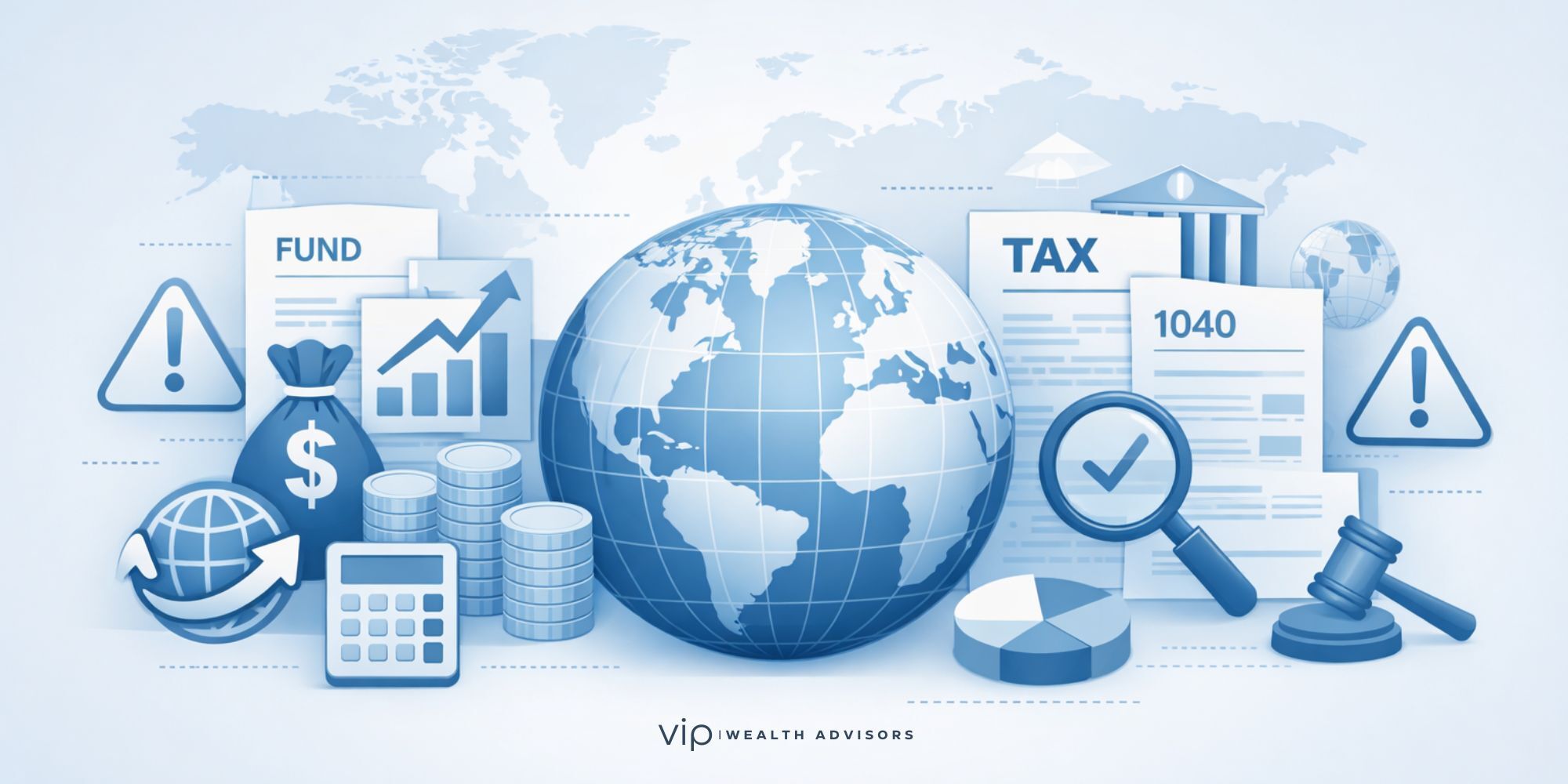When you run a pass-through business, whether as a sole proprietor, S corporation shareholder, or partner in a partnership, the Qualified Business Income (QBI) deduction is one of the most powerful tax breaks available, however, with the passage of the One Big Beautiful Bill Act (OBBBA, Public Law 119-21) on July 4, 2025, the landscape shifted. For business owners, the changes aren't just technical; they demand a fresh review of compensation strategy, entity structure, and year-end moves.
In this article, we'll walk through:
- What is QBI (and what isn't)
- The core mechanics of the deduction
- What OBBBA changed permanently
- Wage/property and SSTB limitations, post-OBBBA
- Real examples illustrating how the math works
- Planning moves for tax years 2025–2026
- What to watch for in IRS guidance
- A Q&A section aimed at real client questions
Let's dive in!
Section 199A (QBI deduction) is now permanent. Under prior law, it was scheduled to expire after 2025.
Phase-in (limitation) thresholds increase. For non-joint returns, the phase-in threshold rises from $50,000 to $75,000 of taxable income; for married filing jointly, from $100,000 to $150,000.
Minimum deduction of $400. Taxpayers with at least $1,000 of active QBI may claim a floor QBI deduction of $400 (adjusted for inflation).
The deduction rate remains 20%. Some earlier proposals suggested increasing the rate, but the enacted OBBBA retains the 20% rate.
Effective for 2025 and beyond. The modifications apply to tax years beginning after December 31, 2025 (i.e., for 2026 returns).
What Is QBI? The Basics You Must Know
Qualified Business Income (QBI) is, broadly speaking, the net income (or loss) from a domestic trade or business (other than a C corporation) that is eligible under the rules of Section 199A. It includes ordinary business profits, gains, deductions, and losses tied to that qualified business but excludes certain items such as:
- Guaranteed payments to partners for services
- Reasonable compensation (wages) paid to shareholders of an S corporation.
- Investment items (capital gains, dividends, interest, etc.) not properly allocable to active business operations
- Certain income from foreign transactions, notional principal contracts, etc.
The QBI deduction (sometimes called the "Section 199A deduction") allows eligible taxpayers to deduct up to 20% of QBI, plus 20% of qualified REIT dividends and qualified publicly traded partnership (PTP) income, subject to limitations. But the total deduction cannot exceed 20% of taxable income (before the QBI deduction), minus net capital gain (plus adjustments) for that year.
Eligible taxpayers include individuals, estates, and trusts with business income flowing through from sole proprietorships, partnerships, and S corporations.
Note: For many taxpayers, the QBI deduction is determined using IRS Form 8995 or 8995-A, depending on income level and complexity.
What OBBBA Changed - The Law Explained
The passage of OBBBA marks a pivot in how business owners should think about the QBI deduction. The key changes are:
1. Permanency
The most fundamental change is that OBBBA makes Section 199A permanent. Previously, the QBI deduction (as enacted under the Tax Cuts and Jobs Act) was set to expire after 2025. This provides certainty for long-term planning.
2. Expanded Phase-In (Limitation) Ranges
One of the main constraints on QBI has been the wage/property limitation and the Specified Service Trade or Business (SSTB) limitation. Under prior law, these limitations began to phase in once taxable income exceeded $50,000 (single) / $100,000 (joint) and fully applied beyond $100,000 / $200,000. OBBBA shifts those thresholds upward:
- Non-joint returns: $50,000 → $75,000
- Joint returns: $100,000 → $150,000 PKF
The result: more taxpayers fall under the "safe zone" where wage/property limitations (or SSTB phaseouts) do not apply.
3. Minimum Deduction Floor
Under OBBBA, taxpayers who have at least $1,000 of active QBI can claim a minimum QBI deduction of $400, even if the normal calculation would result in zero. This is designed to help smaller business owners or side ventures.
4. Rate Remains 20%
While some drafts of the bill proposed increasing the deduction rate (e.g. to 23%), the final law keeps it at 20%.
5. Application Timing
The OBBBA changes apply to tax years beginning after December 31, 2025. (Thus, for most calendar-year individuals, they will begin for the 2026 return. )
Wage/Property Limitation & SSTB Rules Post-OBBBA
Wage/Property Limitation
When a taxpayer's taxable income is above the threshold (i.e. the expanded $75k / $150k range), the QBI deduction is limited by the greater of:
- 50% of the W-2 wages paid by the business
- 25% of the W-2 wages plus 2.5% of the unadjusted basis immediately after acquisition (UBIA) of qualified property
This limitation ensures that businesses without payroll or capital investment don't reap a full 20% deduction without commensurate activity.
Under OBBBA, because thresholds are higher, more taxpayers fall into the zone below the limitation application. But once above, the limitation operates the same as before.
Specified Service Trade or Business (SSTB) Phaseout
An SSTB is a service profession (law, health, finance, consulting, etc.) where the principal asset is the reputation or skill of the individuals. Normally, if taxable income exceeds the upper phaseout limit, no QBI deduction is allowed for those income sources.
Under OBBBA, the range over which the SSTB deduction phases out is now wider (due to higher thresholds). As a result, more of those in the "gray zone" may still qualify for a partial deduction.
Because of these constraints, business owners in high-income brackets must carefully model wage and asset allocation.
Aggregation and Multiple Businesses
If you operate multiple trades or businesses, or combine an SSTB with a non-SSTB, aggregation rules may apply. Each business's QBI is computed separately, then summed (or limited). Losses from one business may offset gains in others and carry forward as "qualified business losses" under Section 199A rules.
Qualified Business Income (QBI) Deduction: Real-World Examples After the OBBBA
The One Big, Beautiful Bill Act (OBBBA) significantly modernized the §199A Qualified Business Income deduction beginning in 2026, increasing the phase-in thresholds and simplifying the calculation for many small business owners.
Below are three examples illustrating how the deduction works across different business structures and income levels.
Example 1: Sole Proprietor Below the Threshold (Post-OBBBA)
Scenario:
Morgan is a single taxpayer who operates a sole proprietorship that generates $80,000 of Qualified Business Income (QBI) in 2026. After applying the standard deduction and other adjustments, her taxable income is $70,000. This amount is below the new OBBBA phase-in threshold of $75,000 for single filers.
Calculation:
Because Morgan's taxable income is below the threshold, she is eligible for the full 20% QBI deduction, and the wage and property limitations do not apply.
However, the deduction is limited to 20% of the lesser of:
- QBI ($80,000), or
- Taxable income ($70,000), reduced by any net capital gain (assume none in this case).
Therefore: 20% × $70,000 = $14,000 QBI deduction
Morgan's taxable income after the QBI deduction is: $70,000 – $14,000 = $56,000
Key Takeaway:
When taxable income is below the threshold, the taxpayer receives the full 20% QBI deduction, limited to 20% of taxable income (before the QBI deduction and net of net capital gain). No wage or property tests apply.
Example 2: S-Corp Owner Where Wage Limitation Applies (Post-OBBBA)
Scenario:
Jay is married, filing jointly, and owns an S corporation that earns $500,000 of business profit before paying him. He takes a reasonable W-2 salary of $150,000, and the remaining $350,000 flows through as Qualified Business Income (QBI). After deductions, Jay's total taxable income is $480,000. For 2026, the OBBBA sets the phase-in threshold for the wage/property limitation at $403,500 for joint filers, with the phase-in range extending to $553,500.
Because Jay's taxable income is within the phase-in range, the wage/property limitation is phased in, rather than fully applied.
Step 1: Calculate the Tentative QBI Deduction (Before Limitations)
20% × $350,000 (QBI) = $70,000
Step 2: Calculate the Wage/Property Limitation
The deduction is limited to the greater of:
- 50% of W-2 wages: 0.50 × $150,000 = $75,000
- 25% of W-2 wages + 2.5% of UBIA (assume UBIA = $0): (0.25 × $150,000) + 0 = $37,500
The greater amount is $75,000.
Step 3: Apply the Phase-In of the Limitation
Since Jay's taxable income ($480,000) is within the $403,500–$553,500 phase-in range, the wage/property limitation is phased in proportionally. However, in this case, Jay's tentative deduction ($70,000) is less than the wage/property limitation ($75,000). As a result, the phase-in does not reduce his deduction further, and Jay may claim the full $70,000 QBI deduction.
If Jay Paid Himself Less in W-2 Wages:
For example, if Jay paid himself $100,000 in W-2 wages, the 50% wage limitation would be $50,000. In that case, the phase-in would cap his deduction at $50,000, since the tentative deduction ($70,000) would exceed the wage limitation.
Key Takeaway:
For taxpayers with taxable income within or above the phase-in range, the wage/property limitation can restrict the QBI deduction. Paying too little in W-2 wages can reduce the allowable deduction. When taxable income is within the phase-in range, the limitation is phased in, but if the tentative deduction is already below the wage/property cap, the phase-in does not further reduce the deduction.
Example 3: Application of the §199A QBI Deduction for an SSTB under the OBBBA
Scenario:
Marisol is a self-employed consultant. Her business is classified as a Specified Service Trade or Business (SSTB) under IRC §199A(d)(2).
In 2026, her business generates $200,000 of qualified business income (QBI) before deductions. After accounting for allowable adjustments (such as the §179 expense, half of self-employment tax, and the standard deduction), Marisol’s taxable income (married filing jointly) is $140,000. She has no net capital gain.
Relevant Law under the OBBBA:
The One Big, Beautiful Bill Act (OBBBA) made the §199A QBI deduction permanent and expanded the phase-in range for SSTB limitations.
Beginning in 2026, the phase-out range increases from $100,000 to $150,000 for married couples filing jointly and from $50,000 to $75,000 for single and head-of-household filers, both indexed annually for inflation.
Under IRS Revenue Procedure 2025-32, the 2026 taxable-income thresholds that trigger these limits are:
- Married Filing Jointly: phase-out begins at $403,500 and ends at $553,500.
- Single / Head of Household: phase-out begins at $201,750 and ends at $276,750.
Taxpayers with taxable income at or below these thresholds can claim the full 20% QBI deduction, even for an SSTB. Above those levels, the deduction phases out gradually across the OBBBA-expanded range.
The deduction equals the lesser of:
- 20% of qualified business income, or
- 20% of taxable income (before the QBI deduction and net capital gain).
The deduction itself does not reduce taxable income for purposes of computing the deduction.
Calculation:
- Determine if the SSTB limitation applies:
Marisol’s taxable income ($140,000) is below the $403,500 threshold for joint filers. Therefore, her SSTB is treated as a qualified trade or business, and the full QBI deduction is available. No phase-out applies. - Calculate 20% of QBI:
20% × $200,000 = $40,000 - Calculate 20% of taxable income (before QBI deduction and net capital gain):
20% × $140,000 = $28,000 - Determine the deduction:
The deduction is the lesser of the two amounts above:- 20% of QBI = $40,000
- 20% of taxable income = $28,000
✅ Result: Marisol’s §199A deduction = $28,000
Explanation:
Because Marisol’s taxable income is below the SSTB threshold, her consulting business qualifies for the full QBI deduction.
However, the deduction is limited to 20% of taxable income (before the QBI deduction and net capital gain), since that figure is smaller than 20% of QBI.
The deduction itself does not reduce taxable income for computing the limitation.
What if Marisol’s taxable income exceeds the threshold?
If Marisol’s taxable income were above $403,500 but not more than $553,500 (the phase-in range for joint filers in 2026), only a portion of her SSTB income, W-2 wages, and qualified property would be eligible for the deduction. The allowable percentage would shrink proportionally as income increases within that range.
If her taxable income exceeds $553,500, none of her SSTB income would be eligible for the §199A deduction.
Conclusion:
Under the OBBBA and 2026 IRS thresholds, Marisol’s QBI deduction is $28,000 because her taxable income is below the SSTB threshold, and the deduction is limited to 20% of taxable income.
This reflects the correct application of the §199A deduction for an SSTB under the post-OBBBA rules, incorporating the expanded phase-in window and proper 2026 threshold calculations.
Planning Implications & Action Checklist for 2025–2026
Given the permanent footing of QBI and the new structural tweaks under OBBBA, business owners and their advisors should consider these strategic moves:
- Review reasonable compensation strategy. In S corporations, adjusting salary vs distribution becomes even more critical: too low wages will throttle QBI under limitations; too high wages incur payroll tax drag.
- Evaluate entity structure. For new or reorganizing businesses, compare using an S corporation, a partnership, or a sole proprietorship, especially when combining wage/property inputs.
- Invest in qualified property or capital. Where it makes sense, deploying capital in depreciable assets (UBIA) can help support the wage/property limit (especially if wages are modest).
- Leverage aggregation when beneficial. If you operate multiple businesses (some SSTB, some non-SSTB), aggregation may allow pooling and netting to maximize the deduction benefit.
- Maintain clean books. Track W-2 wages, capital cost basis, and business allocations meticulously, given the greater scrutiny on QBI calculations.
- Plan interim year moves. In 2025 (the year before the new regime), anticipate where you might cross into thresholds under old vs new rules, and proactively manage income timing.
- Monitor state treatment. Some states do not conform to federal QBI rules or require adjustments. Also, certain states permit a pass-through entity tax (PTET) election, which may affect federal QBI. AAO
- Watch audit & guidance risk. The IRS and Treasury may issue new proposed regulations, safe harbors, or transition rules, especially around aggregation or minimum deduction interpretations.
These actions can help you maximize the benefit of QBI in the new environment.
While OBBBA clarifies permanence and raises thresholds, many interpretive questions remain:
- The IRS and Treasury will likely issue regulations or guidance explaining how to apply the new minimum $400 deduction, inflation indexing, and interactions with the wage/property limit.
- Aggregation safe harbors, anti-abuse rules, and the treatment of "tiered" pass-throughs may be clarified.
- Transition rules and the possibility for taxpayers to apply new thresholds earlier in some instances could be addressed.
- The interaction of QBI and new depreciation/expensing rules (e.g. bonus depreciation under OBBBA) may create synergies or traps.
- Monitoring IRS notices, proposed regs, and the annual inflation adjustments will be critical.
Bookmark the IRS QBI page and Public Law 119-21 text for updates.
Bottom Line & Next Steps
The OBBBA's reforms to qualified business income mark a structural shift that rewards proactive planning. With the deduction now permanent, raised thresholds, and a minimum deduction in place, business owners should treat QBI not as a "bonus" but as integral to the entity and compensation strategy.
If you'd like us to run a "QBI health check" for your passthrough business (modeling different salary/distribution splits, aggregation options, or prospective income growth), we'd be glad to help. Contact VIP Wealth Advisors to schedule a review or download our QBI planning checklist.
Q&A: Qualified Business Income (QBI) & OBBBA: Common Questions
+ Q: Who qualifies for the QBI deduction in 2025 and beyond?
A: Individuals, estates, and trusts with business income from a sole proprietorship, partnership, or S corporation generally qualify - as long as that income is "qualified business income" under Section 199A.
+ Q: Does OBBBA make the QBI deduction permanent?
A: Yes - Public Law 119-21 makes the 20% QBI deduction permanent and uncouples it from the pre-2026 sunset schedule.
+ Q: What is the new minimum QBI deduction under OBBBA?
A: If you have at least $1,000 of active QBI, you may claim a floor deduction of $400 (inflation adjusted) even if your calculation would otherwise yield zero.
+ Q: How do wages and property affect my QBI deduction?
A: If your taxable income exceeds the threshold, the deduction is limited to the greater of 50% of your W-2 wages or 25% of wages plus 2.5% of UBIA (basis of qualified property).
+ Q: Can an S-corp owner raise wages to increase QBI deduction?
A: Potentially, yes - increasing W-2 wages helps your business meet the wage/property limitation. But you must balance it with payroll tax costs and ensure "reasonable compensation" standards.
+ Q: What if I own a specified service business (SSTB)?
A: If your taxable income is below the threshold, SSTBs can take the full deduction. If above, the deduction phases out (but under OBBBA, the phaseout range is wider).
+ Q: When do these changes take effect?
A: For tax years beginning after December 31, 2025 - effectively for 2026 tax returns and onward.
+ Q: How do states treat QBI now?
A: Treatment varies. Some states conform to federal rules, others disallow or limit QBI. Also, many states permit a pass-through entity tax (PTET) election that may interact with the federal deduction.
+ Q: What regulations do I need to watch?
A: Expect IRS/Treasury guidance on minimum deduction, aggregation, inflation indexing, and possible safe harbors.
Want a QBI Health Check for 2025-2026?
We will model salary vs distributions, aggregation, UBIA moves, and SSTB exposure - and hand you a specific action plan.
View More Articles by Topic
- Taxes (76)
- Financial Planning (40)
- Equity Compensation (34)
- Investments (23)
- RSU (21)
- Tax Policy & Legislation (18)
- Business Owner Planning (15)
- Incentive Stock Options (14)
- Retirement (14)
- Psychology of Money (10)
- Alternative Investments (9)
- Real Estate (9)
- AMT (8)
- Pre-IPO Planning (8)
- Estate Planning (7)
- Fiduciary Standard (6)
- NSOs (6)
- The Boring Investment Strategy (6)
- Capital Gains Tax (5)
- Crypto (5)
- QSBS (5)
- Post-IPO Tax Strategy (4)
- 401(k) Strategy (3)
- Private Investments (3)
- Q&A (3)
- Charitable Giving (2)
- ETF Taxes (2)
- IRA Strategy (2)
- International Financial Strategies (2)
- Irrevocable Trust (2)
- Legacy Wealth (2)
- Market Insights (2)
- Market Timing (2)
- Stock Market (2)
- Venture Capital (2)
- Video (2)
- AUM vs Flat Fee (1)
- Altruist (1)
- Atlanta (1)
- Book Review (1)
- Depreciation & Deductions (1)
- Education Planning (1)
- Precious Metals (1)
- QTIP Trust (1)
- Revocable Trust (1)
- Schwab (1)
- Solo 401k (1)








